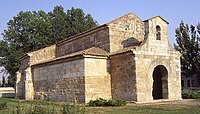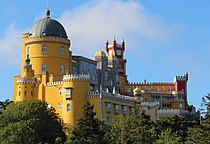




The Visigoths entered Hispania (modern Spain and Portugal) in 415, and they rose to be the dominant people there until the Moorish invasion of 711 brought their kingdom to an end.
This period in Iberian art is dominated by their style. Visigothic art is generally considered in the English-speaking world to be a strain of Migration art, while the Portuguese and Spanish-speaking worlds generally classify it as Pre-Romanesque.
Branches of Visigothic art include their architecture, their crafts (especially jewellery), and even their script.

